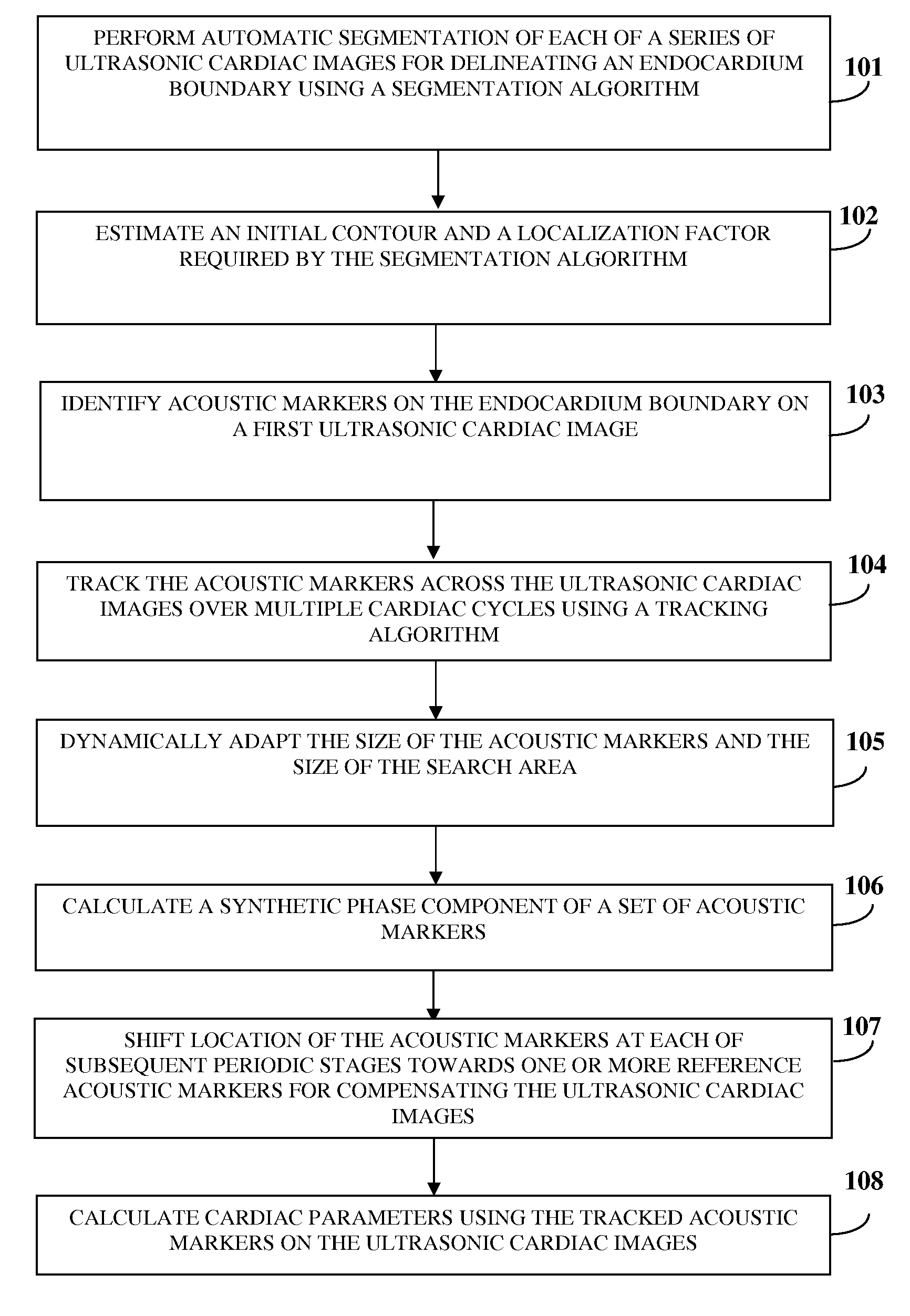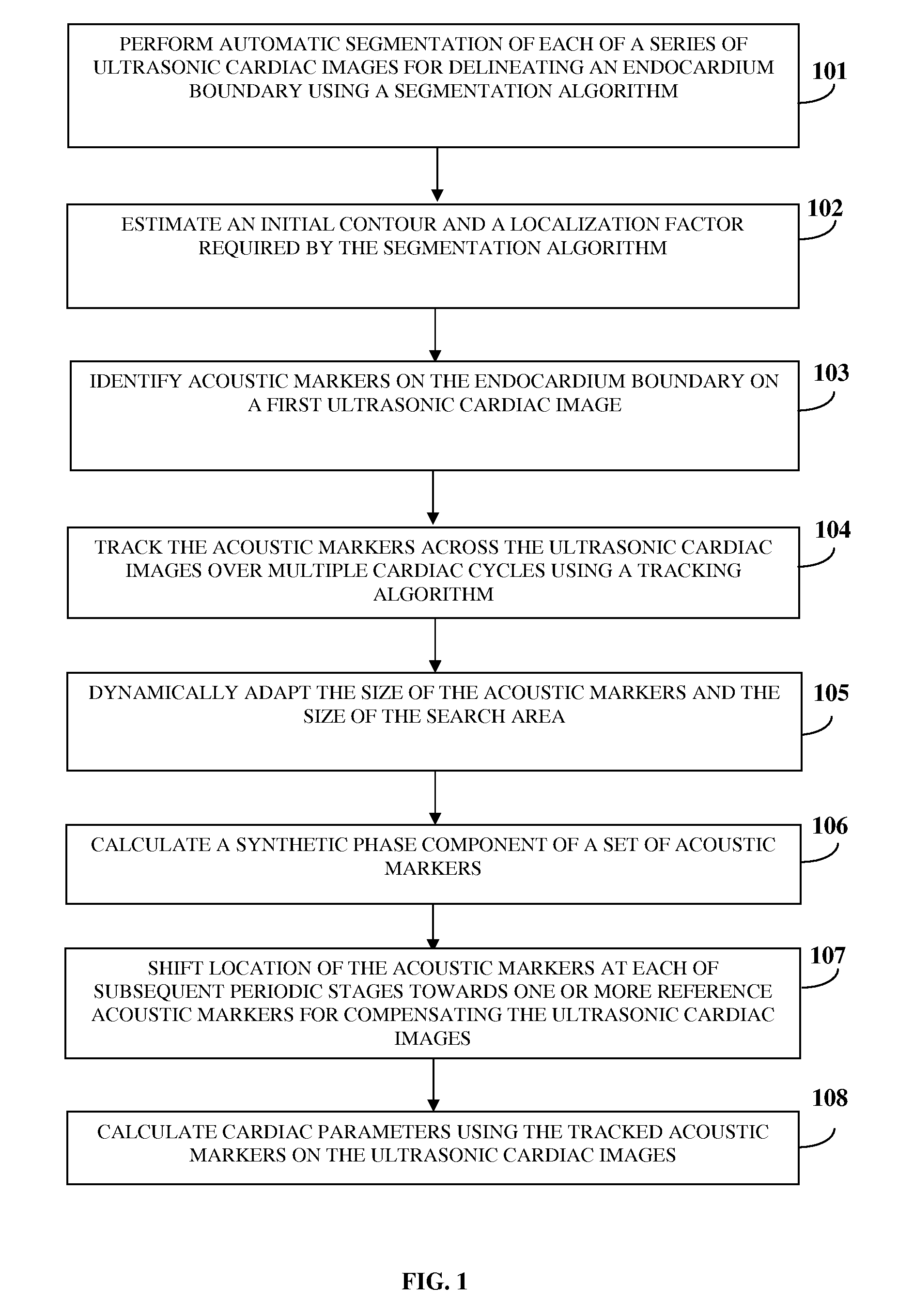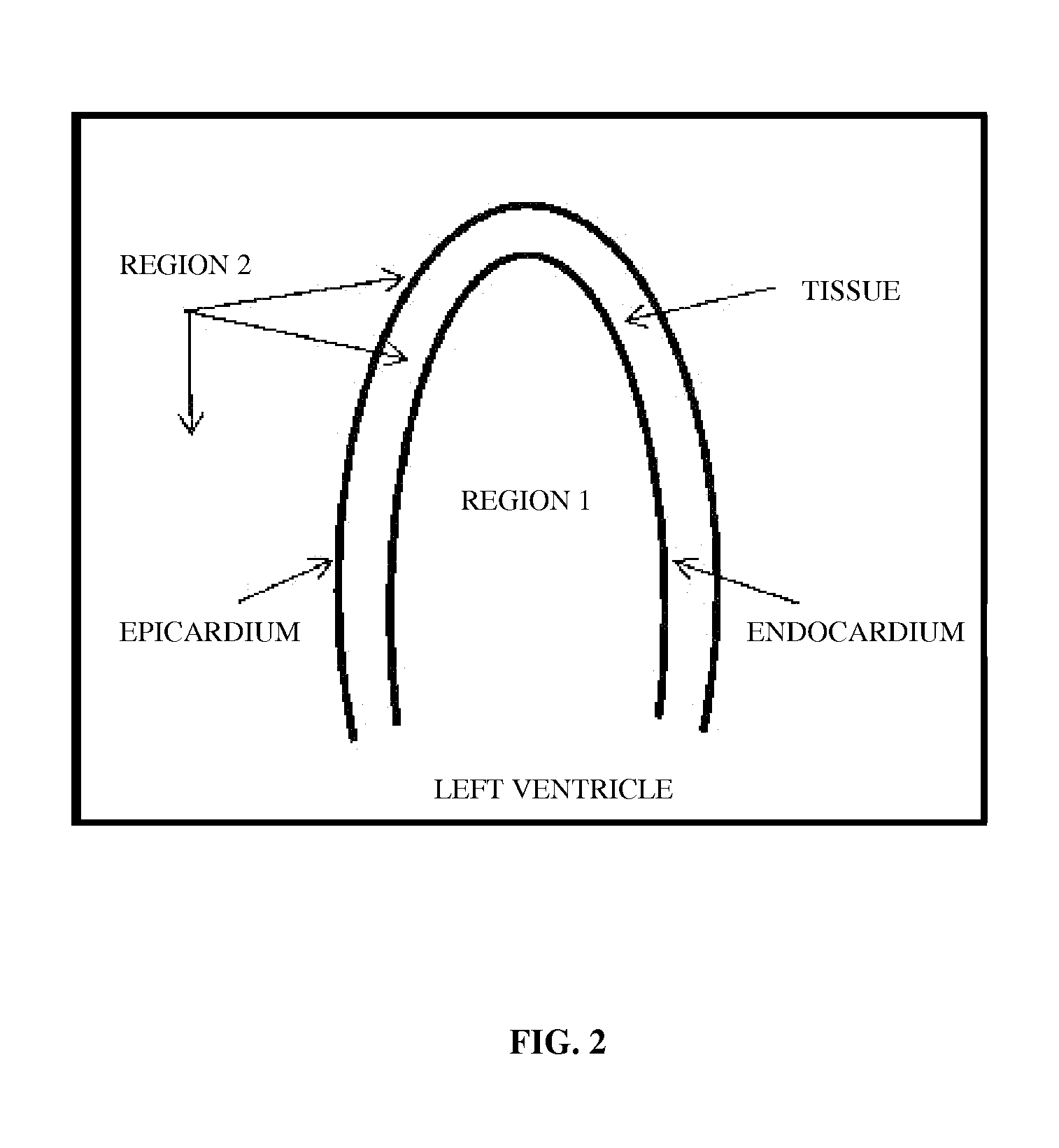Automatic Cardiac Functional Assessment Using Ultrasonic Cardiac Images
a functional assessment and ultrasonic technology, applied in ultrasonic/sonic/infrasonic diagnostics, image enhancement, instruments, etc., can solve the problem of reducing the accuracy of the assessed or quantified cardiac parameters
- Summary
- Abstract
- Description
- Claims
- Application Information
AI Technical Summary
Benefits of technology
Problems solved by technology
Method used
Image
Examples
Embodiment Construction
[0049]FIG. 1 illustrates a computer implemented method for performing automatic cardiac functional assessment using a series of ultrasonic cardiac images. A series of ultrasonic cardiac images, for example, echocardiograms are obtained from an echocardiogram database, for example, in an offline mode. Automatic segmentation of each of the ultrasonic cardiac images is performed 101 for delineating an endocardium boundary in each of the ultrasonic cardiac images using a segmentation algorithm. The segmentation algorithm is, for example, based on a region-based active contour algorithm. The segmentation algorithm is configured to automatically delineate the endocardium boundary using localized image statistics. The computer implemented method and system disclosed herein automatically estimates 102 an initial contour and a localization factor that constitute inputs to the segmentation algorithm for delineating the endocardium boundary. One or more periodic stages of each of the cardiac c...
PUM
 Login to View More
Login to View More Abstract
Description
Claims
Application Information
 Login to View More
Login to View More - R&D
- Intellectual Property
- Life Sciences
- Materials
- Tech Scout
- Unparalleled Data Quality
- Higher Quality Content
- 60% Fewer Hallucinations
Browse by: Latest US Patents, China's latest patents, Technical Efficacy Thesaurus, Application Domain, Technology Topic, Popular Technical Reports.
© 2025 PatSnap. All rights reserved.Legal|Privacy policy|Modern Slavery Act Transparency Statement|Sitemap|About US| Contact US: help@patsnap.com



